This morning there wasn't a single cloud in the sky. It wasn't that clear, though:
All of that white fluffy stuff is due to contrails. Oh, and there's a Moon in there somewhere.
Here's an interesting article about the global effects of contrails.
This morning there wasn't a single cloud in the sky. It wasn't that clear, though:
All of that white fluffy stuff is due to contrails. Oh, and there's a Moon in there somewhere.
Here's an interesting article about the global effects of contrails.
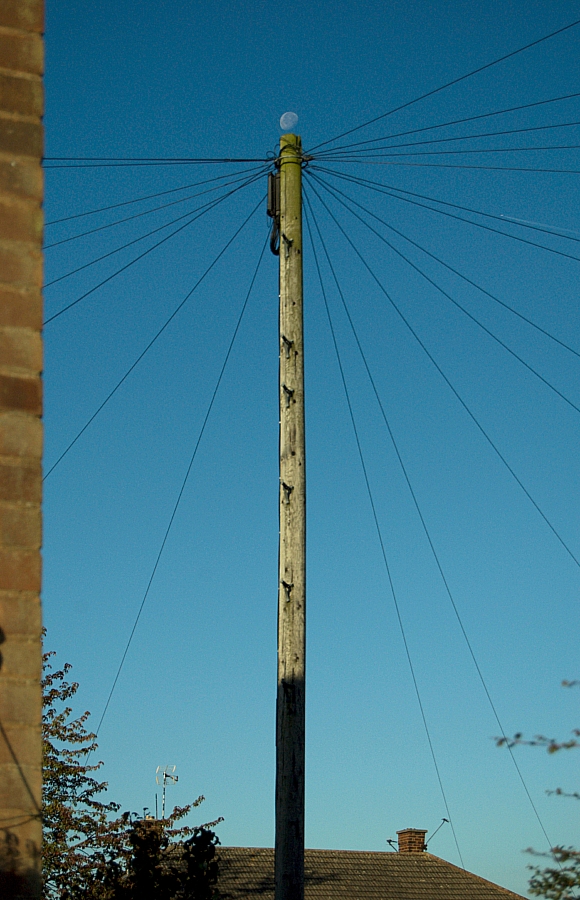
I refer the honourable reader to the post that I prepared some time ago - https://beardedgit.com/?p=436
Schrödinger:

Kepler:

Centrifugal Force:
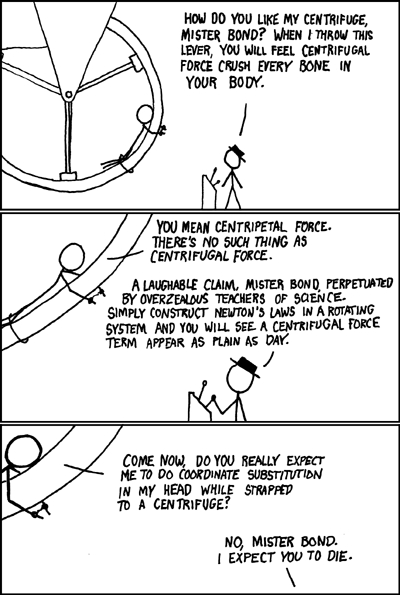
Gravitational Mass:
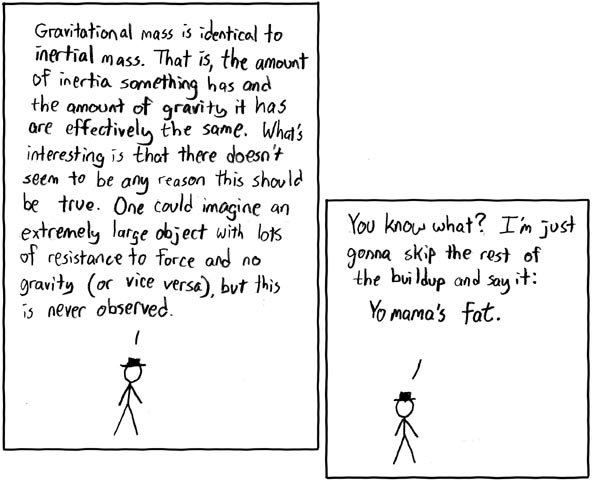
For more stuff like this, start at http://xkcd.com/1/
The Moon at its most glorious time - Lunar light on silver-lined clouds.
Words and pictures by Anna.
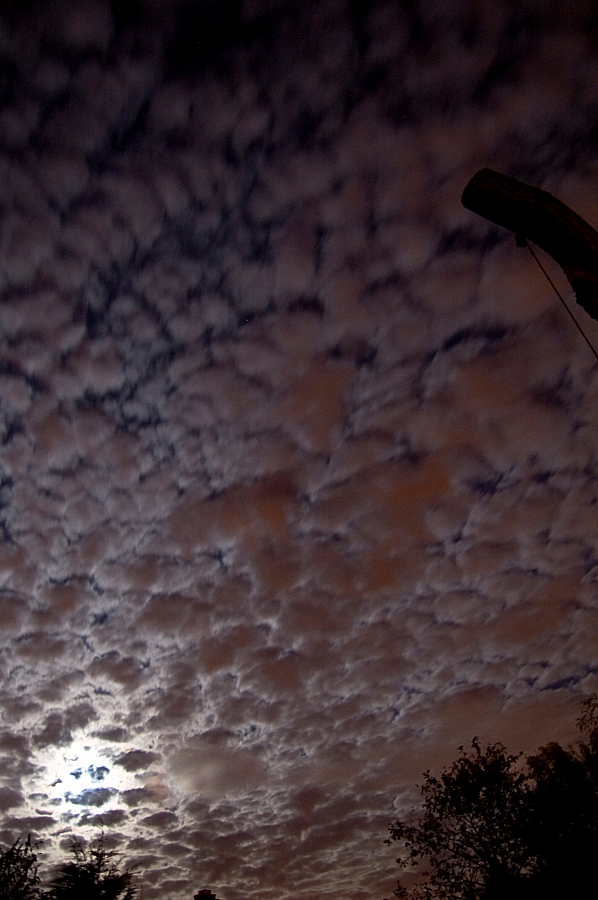

The last quarter of the year promises to be good for meteor viewing. Most of the major showers coincide with favourable Moon phases, so the chances of dark skies are fairly high. For those with an interest in such things, here's a quick "what, when and where" for the rest of the year, based on several info sources:
The Draconids (DRA) will be on show from the 6th to the 10th of October, with peak activity on the 8th at 16:40, and the possibility of some other minor peaks. Expect variable rates, previous storm rates have been up to 500/hour. They're slow-moving things at 20km/s, so they should be easy to identify. The waning Moon rises at 19:18, so there's some time to see what's about before things get too bright. The Draconids are associated with comet 21P/Giacobini-Zinner.
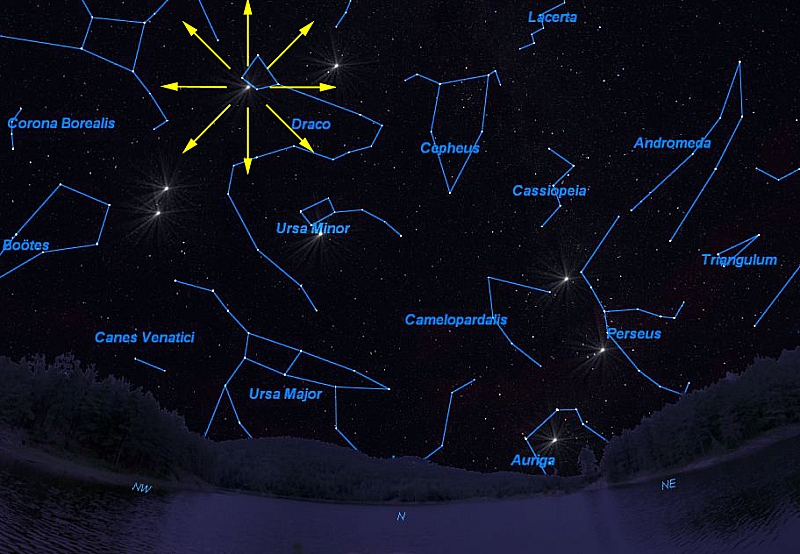
The Draconid radiant
The Orionids (ORI) are active for over a month (from the 2nd of October to the 7th of November) with a broad peak of activity on the 21st of October. That said, there is the possibility of several minor peaks around that date. Rates of about 30/hour are expected, although previous years have seen rates of up to 70/hour. These move a bit quicker at 66km/s but most of them are are faint and therefore difficult to catch on camera. The Moon sets at 18:25 and so won't be a problem. The Orionids are associated with comet 1P/Halley.
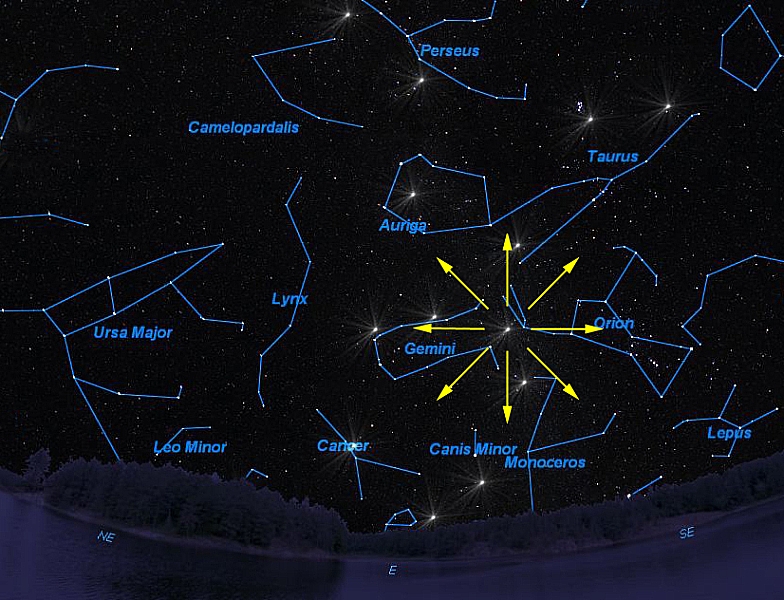
The Orionid radiant
The Leonids (LEO) are on the go from the 10th to the 21st of November, with several peaks expected around the major one at 15:10 on the 17th. Rates for this shower are high (>100/hour) with some researchers predicting brief periods with storm rates of >1000/hour, so this is one to watch, especially with there being no moonlight to contend with! With a speed of 71km/s these are the fastest meteors and they produce long, bright and often colourful trails which are easy to catch on camera. The Leonids are associated with comet 55P/Tempel-Tuttle.

The Leonid radiant
The Alpha-Monocerotids (AMO) could be good this year. The shower lasts from the 15th to the 25th of November with peak activity on the 21st at 15:25. Rates are usually poor at only <10/hour, but short-duration storm-rates of >400/hour have been observed. AMO meteors speed along at 65km/s. The Moon sets at 19:48 and so won't be a problem late on, but could be a hindrance before that.

The Alpha-Monocerotid radiant
The Geminids (GEM) are active between the 7th and the 17th of December, peaking on the 14th at 05:10. Peak rates are generally high and reliable at 120/hour, and the meteors are bright and slow at 35km/s, producing fireballs with bright colours. Ever reliable, this is another event not to be missed. Again, there's no moonlight to spoil the show. The Geminids are associated with asteroid 3200 Phaethon.

The Geminid radiant
The Ursids (URS) will be on show from the 17th to the 29th of December. They are at max on the 22nd with peak rates of only 10/hour, although rates of up to 50/hour have been noted. Speeds are low at 33km/s and the meteors are faint. The Moon sets at 22:14 and so will need to be worked around, assuming that you're not too busy wrapping pressies, visiting relations or getting smashed at the office party. The Ursids are associated with comet 8P/Tuttle.

The Ursid radiant
E. & O. E.
---oooOOOooo---
I should point out that I've only covered the best few meteor events that are visible from the top half of the world. For a full list, you should refer to the IMO Working List of Visual Meteor Showers.
---oooOOOooo---
If you're going out to observe these things, the standard common-sense rules apply. I've stated some guidelines elsewhere on this blog, but there's no harm in posting a revised set here:
Have fun!